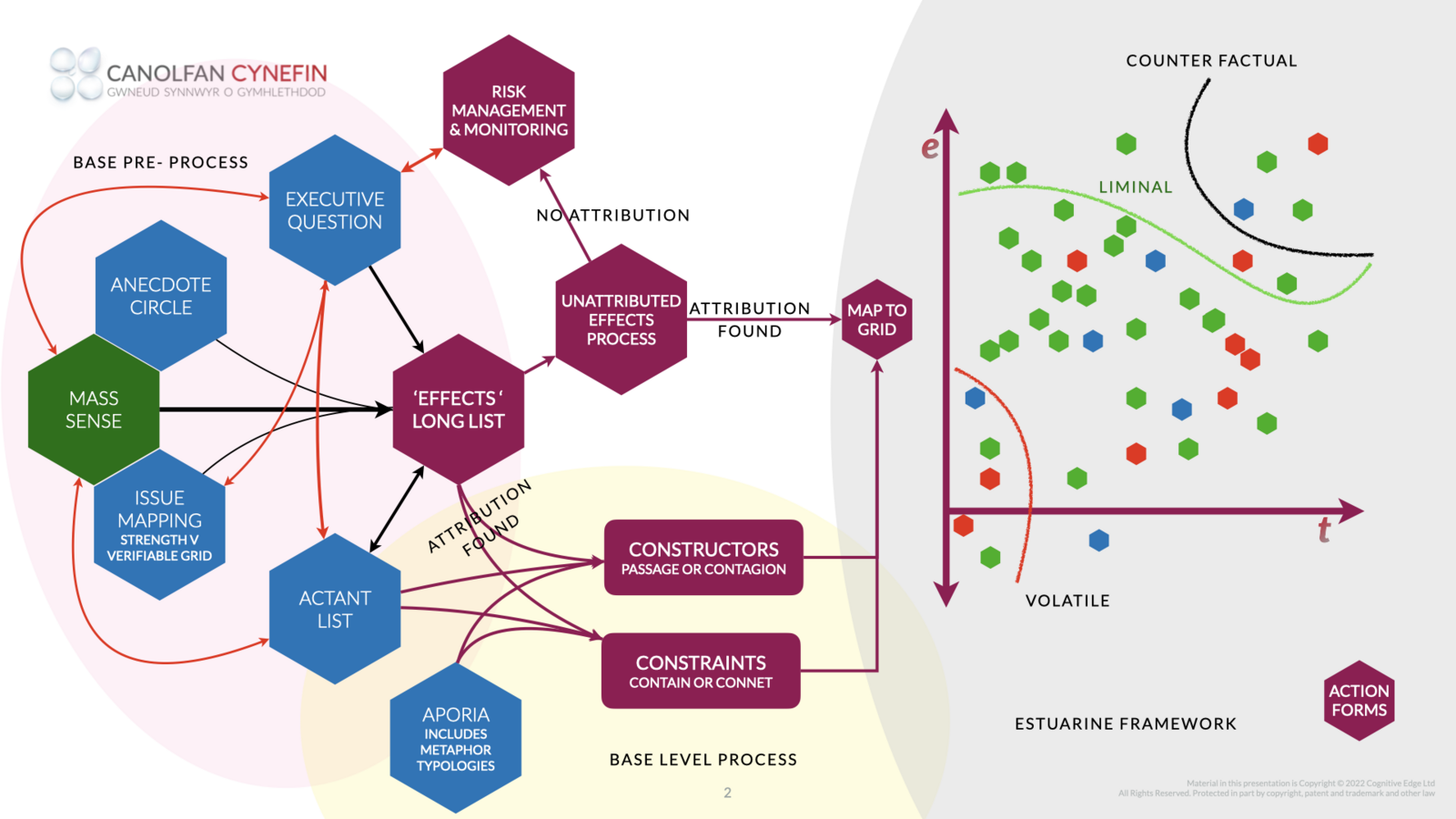Webpage is here.
This was developed as a counter to traditional approaches to strategy that are fixed in nature and reflects the key principles of change in a complex environment.
- Understanding where we are, and starting journeys with a sense of direction rather than abstract goals
- Understanding, and working with propensities and dispositions, managing both so that the things you desire have a lower energy cost than the things you don’t
- Initiating and monitoring micro-nudges, lots of small projects rather than one big project so that success and failure are both (non-ironically) opportunities
- Decomposing to the lowest coherent lever of granularity and creating novelty through new connections
- Identifying what we can change, where we can monitor the impact of that change, and how we can amplify or dampen it
It also embodies the principles of Vector Theory of Change.
Estuarine mapping also allows us to reduce conflict around decision-making in environments with multiple, strong viewpoints on what should be done.
Estuarine mapping explores the "thick" nature of the present - it approaches the present moment not as something fleeting, but as full of dispositions that also contain connections to what the future is going to be, and have been shaped (but not determined) by the past.
